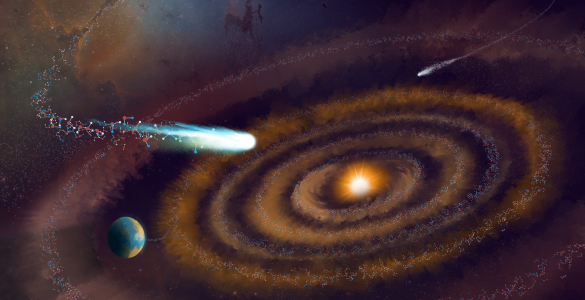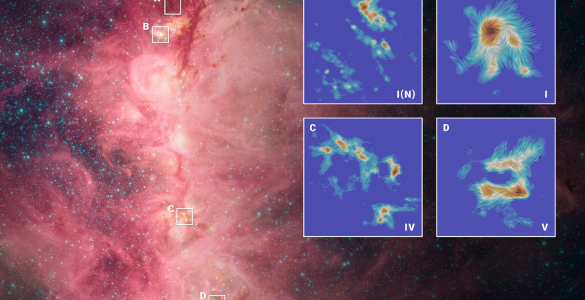Latest NRAO News
News is managed by NRAO News & Public Information. Questions about News? Have a story to share? Want to interview a scientist or create new media about our telescopes?

An international team of astronomers has discovered the first radio-bright tidal disruption event (TDE) occurring outside a galaxy’s center using the U.S. National Science Foundation National Radio Astronomy Observatory (NSF NRAO) Very Large Array (NSF VLA) and Atacama Large Millimeter/submillimeter Array (ALMA), along with several partner telescopes,. The event, designated AT 2024tvd, revealed the fastest-evolving radio signals ever observed from this type of cosmic catastrophe.

The discovery of ancient water in a planet-forming disk reveals that some of the water found in comets—and maybe…

Astronomers have captured the clearest picture yet of how massive stars are born, revealing a dramatic interplay between gravity…

Astronomers have created a detailed map revealing the magnetic fields weaving through TW Hydrae, one of the closest known…

The U.S. National Science Foundation National Radio Astronomy Observatory (NSF NRAO) is celebrating a historic achievement: research using our…

Astronomers using the Atacama Large Millimeter/submillimeter Array (ALMA) have made the highest resolution image to date, revealing new insights…

New research has uncovered compelling evidence that water from a comet is strikingly similar to that found in Earth’s…

Astronomers have discovered a remarkably clumpy rotating galaxy that existed just 900 million years after the Big Bang, shedding…

Astronomers are getting a much clearer picture of what galaxies looked like in the early Universe, thanks to a…

A team of astronomers has made a groundbreaking discovery by detecting molecular activity in comet C/2014 UN271 (Bernardinelli-Bernstein)—the largest…





